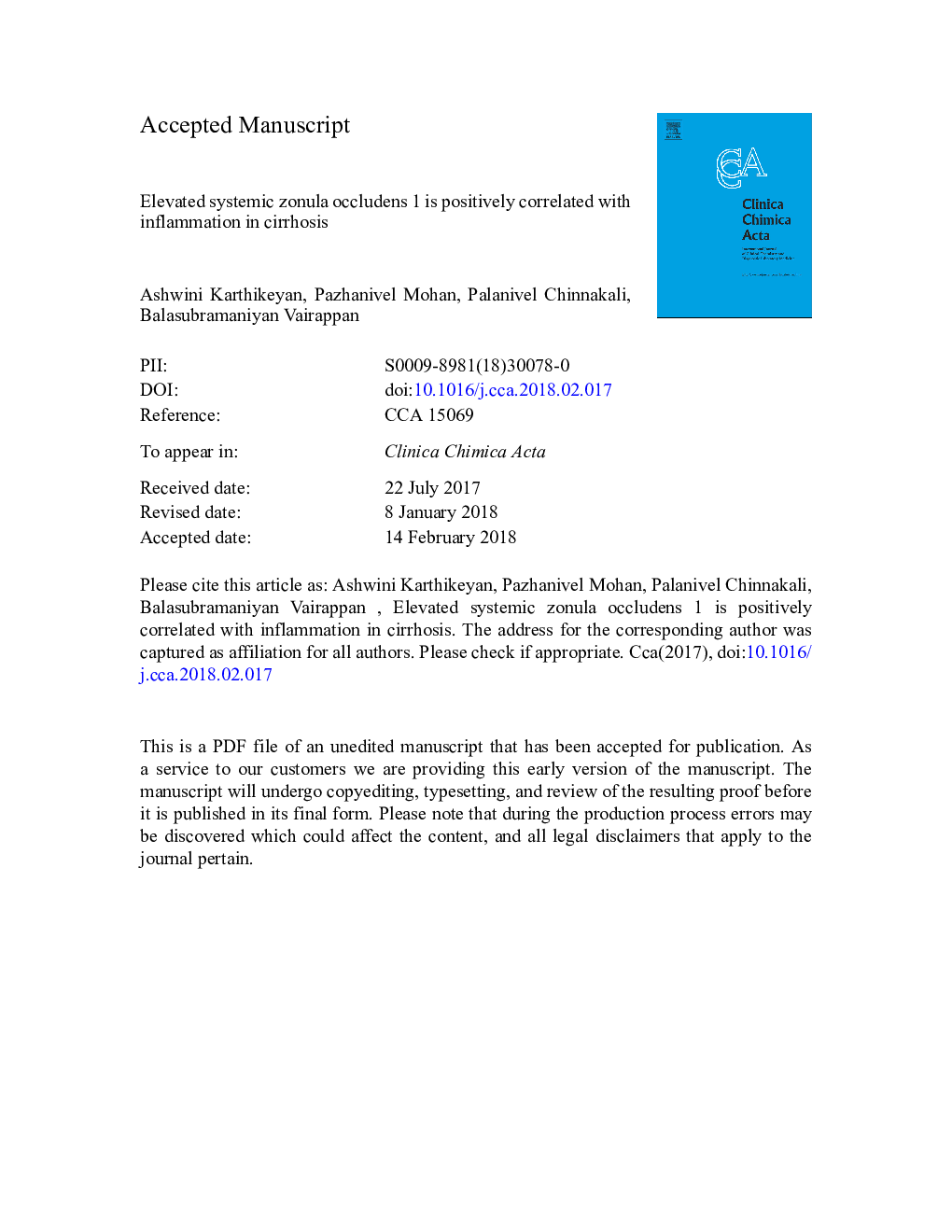| Article ID | Journal | Published Year | Pages | File Type |
|---|---|---|---|---|
| 8309676 | Clinica Chimica Acta | 2018 | 24 Pages |
Abstract
It has been well established that disruption of the intestinal barrier function and increased intestinal permeability contribute to endotoxemia and associated liver injury in patients with cirrhosis. However, the relationship between systemic inflammation and tight junction protein in cirrhosis remain unidentified. The aim of this study was to assess and compare the blood concentrations of ZO-1 with systemic hsCRP in patients with cirrhosis and healthy individuals. Methods: 30 cirrhotic patients and 30 healthy individuals were enrolled in the study. Blood ZO-1 and hsCRP were measured by ELISA and biochemical parameters by AU680 Beckman Coulter (USA) autoanalyser. Results: The serum ALT, AST, bilirubin, gamma GT, ALP and ammonia were significantly (Pâ¯<â¯0.0001) elevated whilst serum albumin concentration was decreased in cirrhotic patients when compared to healthy individuals. Systemic tight junction protein ZO-1 concentration [590.0â¯Â±â¯32.79 vs. 349.9â¯Â±â¯18.76â¯pg/ml, respectively; Pâ¯<â¯0.0001] and hsCRP [10.50â¯Â±â¯1.05 vs 5.31â¯Â±â¯0.65â¯mg/L, respectively; Pâ¯<â¯0.001] were significantly elevated in patients with cirrhosis compared to controls. Significant positive correlation was found between increased ZO-1 and hsCRP (râ¯=â¯0.2680 Pâ¯<â¯0.01). Conclusion: Our results suggested that increased systemic ZO-1 concentration was associated with inflammation in cirrhosis. Thus, elevated blood ZO-1 levels could be a prognostic marker of cirrhotic patients with intestinal TJ disruption on the background of inflammation.
Keywords
hs-CRPZonula occluden-1γGTZO-1IFN-γALTiNOSSBPASTAspartate aminotransferaseAlanine aminotransferaseALPAlkaline phosphatasehepatic encephalopathytight junctionsinflammationinterferoninterleukininducible nitric oxide synthaseNitric oxidehigh sensitivity C-reactive proteinTight junction proteinspontaneous bacterial peritonitisgamma glutamyl transferase
Related Topics
Life Sciences
Biochemistry, Genetics and Molecular Biology
Biochemistry
Authors
Ashwini Karthikeyan, Pazhanivel Mohan, Palanivel Chinnakali, Balasubramaniyan Vairappan,
